Laying self-levelling compound
Self-levelling compound is a latex-based product which creates a very smooth subfloor before fitting your final floor covering. It is used on concrete floors or screeds which are uneven, not level, or in poor condition. The compound must be mixed in very clean buckets as any impurities will affect the integrity of the mix – use a mixer paddle with a drill on a slow speed to avoid introducing too much air into the mix. The following sequence shows the standard steps for successfully laying self-levelling compound.
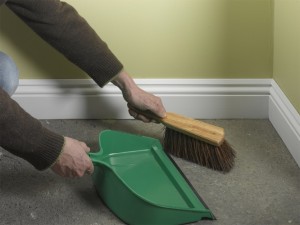 |
1. Prepare the floor by sweeping it thoroughly to remove all dust and debris. |
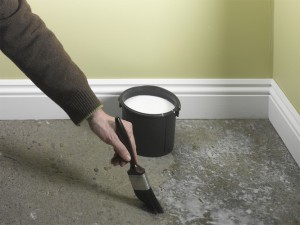 |
2. Apply 5:1 PVA solution (five parts water to one part PVA) as a surface sealant and bonding primer. Allow to dry. Although using PVA in most situations will be perfectly acceptable, some manufacturers will stipulate other bonding primers for the best results. As always, in such cases, go with what the manufacturer recommends. |
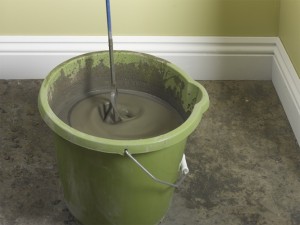 |
3. Mix self-levelling compound as directed by the manufacturer. A drill/driver with a mixer paddle attachment is the ideal tool. Be sure to wear protective goggles. |
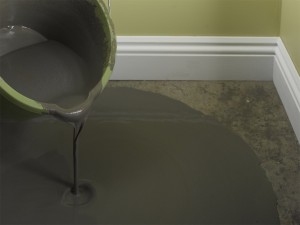 |
4. When you are happy that the compound is smooth and well mixed, pour it onto the floor and allow it to settle to its own level. |
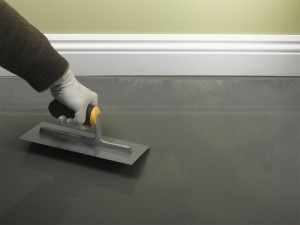 |
5. Mix further compound until the floor is covered. Use a plastering trowel to smooth any lumpy areas. Leave to dry. |
Self-levelling compound tips
- Self levelling compound sets quickly. It will remain workable for no more than 30 minutes, so mix a bucket load according to the manufacturer’s instructions, and immediately mix and lay the next bucketful while the wet edge is still workable.
- The coverage from a bag of compound depends on how thickly it is laid. Therefore, the poorer the condition of the floor, the thicker you will have to lay the compound.
- Pay really close attention to the laying instructions on the back of the bag, and indeed the properties of the particular self-levelling compound you are using. For example, some can be laid very thick, others are only suitable for laying up to a depth of a few millimetres. Also, it is essential to get the proportion of water in the mix exactly right, as too little water and the compound won’t ‘level’, and too much water will weaken the compound strength and often lead to cracking, once the compound has dried.
